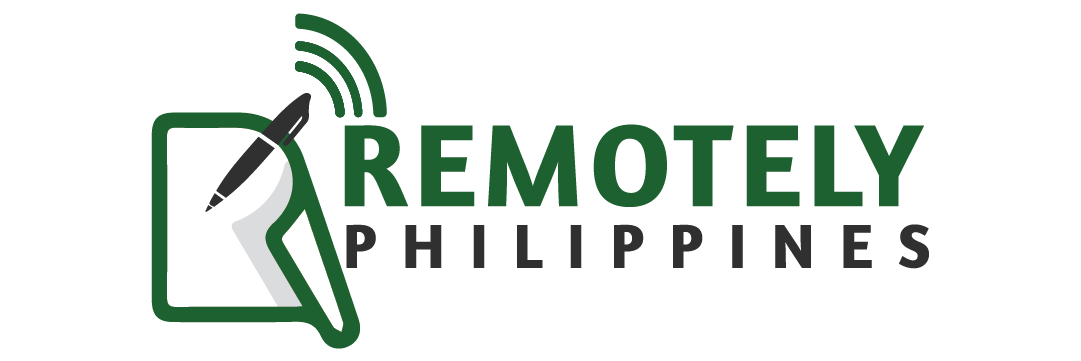How is the global economy shaping up in 2025, and what should CFOs be preparing for?
As we move deeper into 2025, CFOs across industries are facing an environment that is at once promising and uncertain. Growth has not stalled, but neither is it accelerating at the pace many had hoped for after the
post-pandemic rebound.
Inflation remains sticky in some regions, interest rates are high, supply chains continue to evolve, and sustainability is no longer a “nice-to-have” — it’s shaping consumer and investor decisions.
Against this backdrop, CFOs must go beyond number-crunching. They are now expected to balance cost control with investment in growth. They also manage risks that stretch far beyond balance sheets, and make strategic calls that determine whether their organizations thrive or fall behind. CFOs can no longer assume uniform momentum across markets. Strategies must now be tailored by region.
Let’s explore the key global trends every CFO should know in 2025 — and what they mean for business and financial strategy.
Key Takeaways
- Global growth is slowing but resilient:
The IMF projects 3.2% GDP growth in 2025, but momentum is uneven across the U.S., Europe, and Asia-Pacific.
- High interest rates are here to stay:
CFOs must rethink capital structures, liquidity, and financing strategies in a “higher-for-longer” environment.
- Capital is chasing transformation:
Investments are shifting toward sustainability, digital infrastructure, and emerging markets.
- Energy volatility is a strategic risk: CFOs should develop hedging strategies and evaluate renewable investments for long-term stability.
- Sustainability is now a financial strategy:
ESG performance impacts consumer demand, investor decisions, and access to capital.
- Resilience requires agility: CFOs need rolling forecasts, scenario planning, and real-time data visibility to respond to uncertainty.
1. The Global Growth Outlook: Slower, Uneven, but Resilient
According to the
IMF’s July 2025 World Economic Outlook, global GDP is projected to grow at 3.2% in 2025, a modest rate compared to historical averages. The good news: a global recession has been avoided. The challenge: growth remains uneven across regions.
- United States: Growth is slowing but resilient, supported by strong consumer spending and steady employment. However, high interest rates and cautious investment will weigh on expansion. CFOs should balance optimism with caution—stress-testing forecasts and preparing for capital constraints.
- Europe: Persistent energy concerns and geopolitical risks are dampening recovery. While certain economies received temporary boosts from trade distortions, the broader rebound remains tepid. Financial leaders must monitor energy cost dynamics and fiscal policy shifts closely.
- Asia-Pacific: The region remains the global growth engine, with India and Southeast Asia driving much of the momentum. CFOs should focus on scalable investments here, while adjusting for infrastructure and regulatory challenges.
For CFOs, this means the world economy is not collapsing — but assumptions of synchronized growth across markets are no longer safe. Growth strategies must be region-specific, with careful attention to currency volatility, trade dynamics, and inflation differentials.
2. Inflation and Interest Rates: The New Normal of Higher Costs
The era of ultra-low interest rates is over. The
Federal Reserve’s policy updates show rates are expected to remain elevated through much of 2025, with only gradual easing likely. Inflation is cooling but not vanishing, especially in housing, energy, and food sectors.
This “higher for longer” environment has major implications:
- Borrowing costs remain elevated, forcing CFOs to rethink capital structures. Whether financed via bank loans, bonds, or supplier credit, any new capital will carry higher interest burdens, forcing CFOs to revisit capital structures and return thresholds.
- M&A and expansion plans may face tighter financing conditions. Higher rates reduce deal feasibility and tighten finance terms—acquirers must now factor rate risk more carefully into valuations and integration planning
- Cash management and liquidity have regained importance. With borrowing costs high, efficient cash allocation matters more than ever. CFOs should revisit cash buffers, working capital metrics, and short-term investment strategies to ensure resilience.
CFOs who assumed 2024’s inflation surge was temporary must now recognize a new baseline: price volatility is here to stay. Building financial resilience means stress-testing budgets, rethinking leverage, and maintaining flexibility in capital allocation.
3. Investment Shifts: Emerging Markets and Sustainability in Focus
The
UNCTAD World Investment Report 2025 highlights that foreign direct investment (FDI) flows are recovering, with stronger inflows into emerging Asia, clean energy projects, and digital infrastructure. However, traditional sectors like manufacturing and real estate are seeing slower momentum.
For CFOs, the implication is clear: capital is increasingly flowing where growth and transformation intersect. Investment priorities now favor:
- Sustainability-linked projects: Renewable energy adoption, circular economy models, and carbon-neutral operations are no longer optional “ESG initiatives”; they are becoming central to investment decisions. CFOs must weigh upfront costs against long-term benefits like access to green financing, lower energy expenses, and enhanced brand equity.
- Technology adoption:
AI, automation, and data-driven platforms are reshaping finance itself, from predictive analytics to intelligent workflows. For CFOs, the challenge is to ensure ROI by selecting scalable tools that integrate seamlessly into current systems, while balancing cyber risk and compliance obligations.
- Emerging markets: Faster demand growth exists, but with it comes volatility. CFOs are expected to develop risk-adjusted frameworks: hedging strategies, diversified revenue streams, and dynamic capital allocation to capture upside while mitigating downside exposure.
The takeaway: Capital is chasing transformation, not just stability. CFOs who can connect financial stewardship with innovation and sustainability will position their organizations to attract investors, talent, and partners in an increasingly competitive landscape.
4. Energy and Commodity Volatility
Energy remains one of the biggest wildcards in 2025. According to the
U.S. Energy Information Administration (EIA), oil and gas markets remain tight due to supply constraints and geopolitical disruptions. At the same time, renewable energy investment continues to accelerate globally, though infrastructure and storage limitations persist.
CFOs need to plan around:
- Volatile input costs, especially for energy-intensive industries. Unexpected spikes in oil or gas prices can significantly impact operating margins, inventory costs, and capex plans.
- The rising role of renewables may offer long-term stability, but requires upfront investment. Investing in clean energy-solar, wind, and green infrastructure—can offer long-term cost stability and ESG benefits. However, the upfront capital investment and integration complexity require careful ROI modeling and budget planning.
- Currency and commodity hedging strategies to cushion supply chain shocks. Commodity price surges or regional conflicts can disrupt supply. CFOs should develop currency and commodity hedging strategies—whether through futures, swaps, or supplier contracts—to cushion the impact and maintain cost predictability.
Energy planning is no longer the COO’s job alone — it’s a financial strategy issue that directly affects margins and competitiveness.
5. Shifting Consumer and Stakeholder Expectations
What CFOs Should Do Now
Navigating 2025 requires a CFO mindset that blends caution with boldness. Key priorities include:
- Reassess growth markets: Identify where demand is real and where risks outweigh returns. CFOs must look beyond headline GDP numbers and dig deeper into sector-specific and regional demand drivers. Growth is uneven, and not every “hot market” translates into sustainable returns
- Strengthen liquidity: Build cash buffers and maintain financing flexibility. CFOs need to build and defend cash buffers as protection against shocks, maintain multiple financing channels—traditional credit lines, private capital, and green financing options, and reassess debt covenants to ensure flexibility when conditions tighten.
- Prioritize sustainability-linked projects: They are becoming central to competitiveness. Sustainability is no longer optional—it’s central to competitiveness. Projects tied to renewables, carbon-neutral operations, and circular economy models are attracting both capital and consumer preference. CFOs who invest here not only mitigate ESG risks but also secure long-term cost stability and brand strength
- Invest in data and analytics: In uncertain environments, real-time visibility can make the difference between a reactive and proactive strategy. CFOs should prioritize cloud-based financial platforms that consolidate data across units and geographies, predictive analytics that flag risks before they materialize, and
data-driven insights that support board-level decisions on growth, capital allocation, and M&A.
- Scenario planning: In 2025, resilience depends on rolling forecasts and scenario planning. CFO should develop multiple contingencies (best case, base case, downside) to adapt quickly, stress-test assumptions for energy costs, interest rates, and supply chain risks, and build an agile culture where finance teams partner with operations to pivot when disruptions arise. Move beyond static budgets and adopt rolling forecasts with multiple contingencies.
CFOs who adapt to this landscape will be the ones shaping not just financial outcomes, but organizational strategy itself.
FAQs
Conclusion: The CFO as Strategic Navigator
The 2025 global economy is not a crisis story — it’s a transformation story. Growth is uneven, costs are higher, and expectations are shifting, but opportunities abound for those who know where to look.
CFOs who focus only on defense, cost-cutting, and risk avoidance will miss the chance to lead their companies into new markets, technologies, and sustainable growth paths. The real challenge is to play both defense and offense, safeguarding financial health while investing in future readiness.
At Remotely Philippines, we help CFOs and finance leaders build agility into their operations, so they can respond to risks without losing sight of long-term opportunities. From outsourced accounting support to scalable finance teams, we act as the partner behind the scenes — helping you focus on what really matters: strategic growth in an uncertain world.
Ready to strengthen your financial strategy for 2025 and beyond?
Let’s talk about how we can support your team.
Book a meeting with us today!











